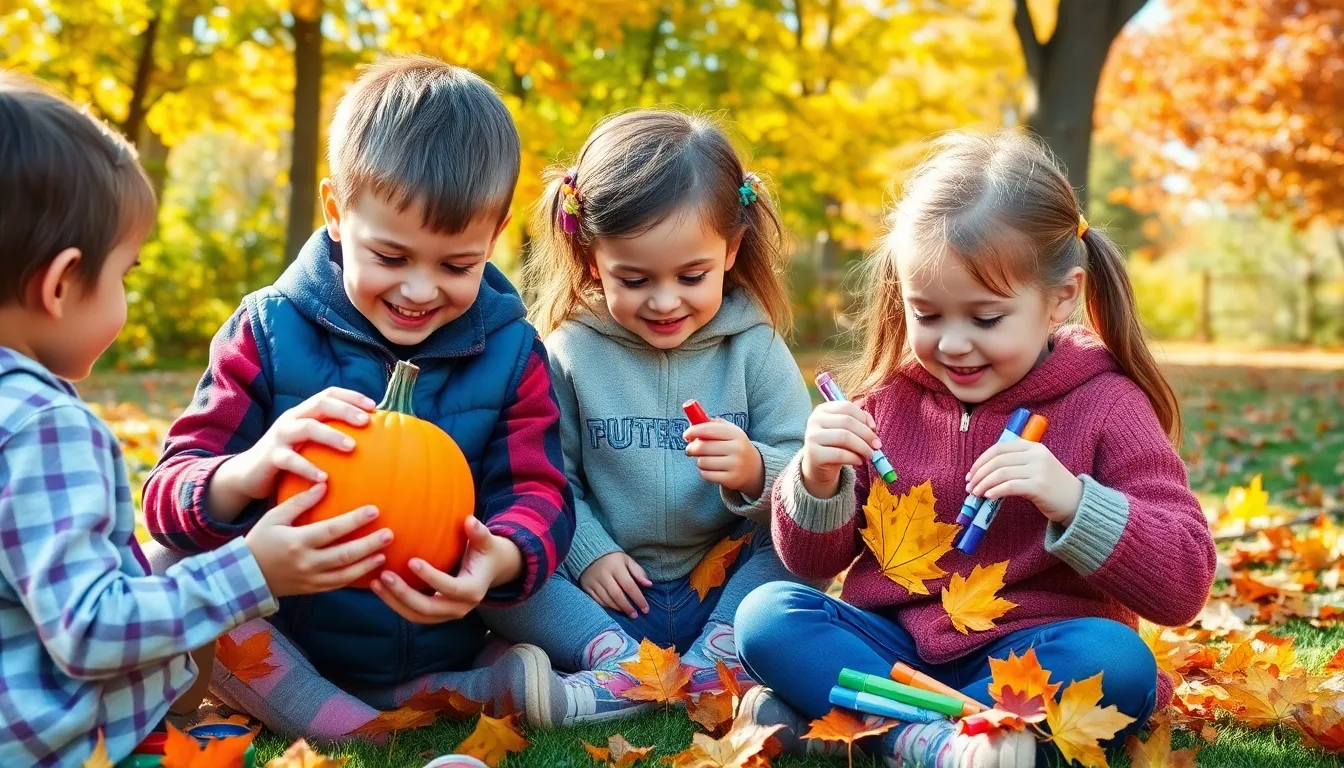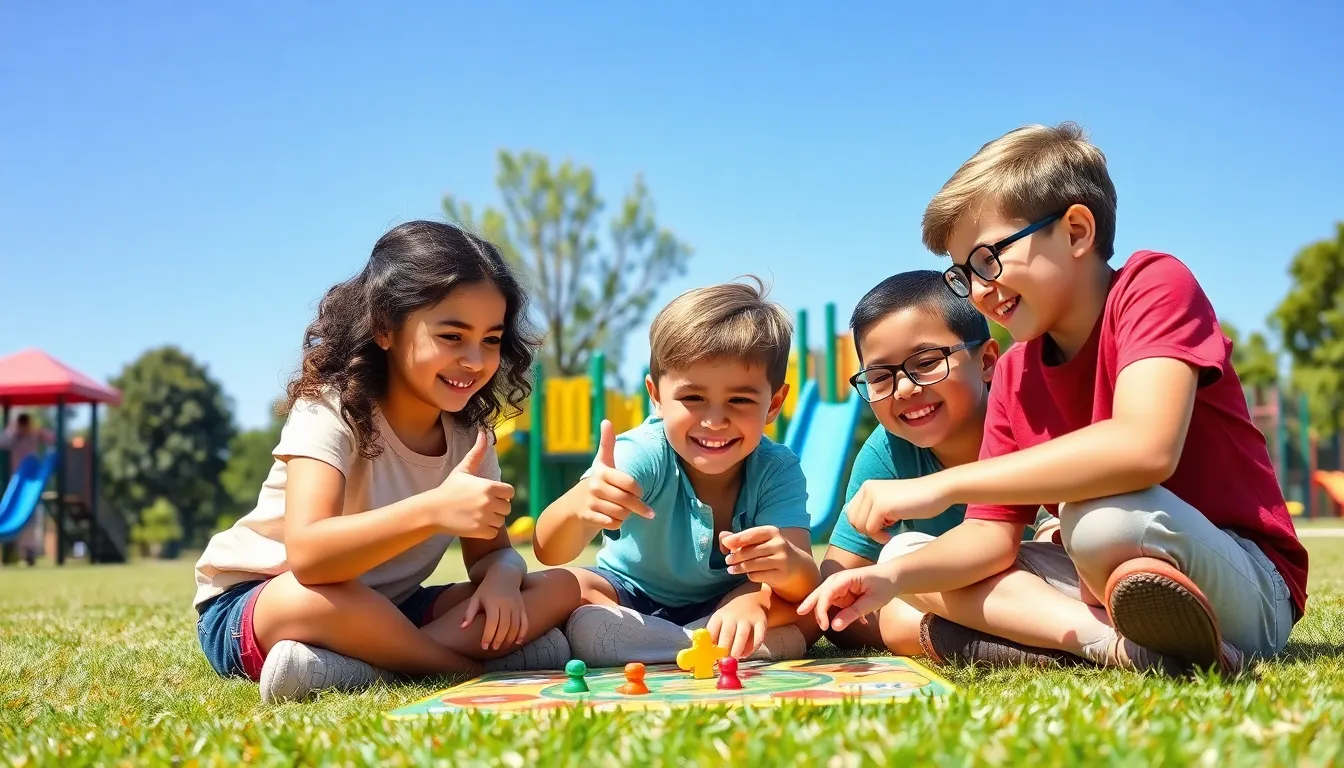As the leaves turn golden and the air gets crisp, it’s the perfect time for kids to unleash their creativity with some fun DIY fall crafts. Forget about screen time; this season offers a treasure trove of inspiration just waiting to be explored. Whether it’s turning pinecones into whimsical creatures or crafting colorful leaf garlands, these activities not only keep little hands busy but also spark imagination.
Table of Contents
ToggleBenefits Of DIY Fall Crafts For Kids
DIY fall crafts offer numerous benefits for children. Engaging in these activities promotes skills that extend beyond creativity.
Encourages Creativity
Creativity flourishes when kids experiment with colors, shapes, and materials. Using fall-themed items like leaves and acorns, children explore their artistic abilities. Crafting allows kids to express feelings and ideas without constraints. Unique projects can result from simple supplies, showcasing individualized creativity. Seasonal themes inspire fresh concepts, enabling children to produce original artwork. Parents can encourage this expression by providing diverse materials and opportunities.
Enhances Motor Skills
Motor skills improve significantly during DIY craft projects. Activities such as cutting, gluing, and assembling develop fine motor coordination. By manipulating various materials, kids strengthen hand-eye coordination. Projects often require attention to detail, promoting dexterity and precision. Developing these skills translates into better performance in everyday tasks, such as writing and tying shoelaces. Participation in craft-making ensures kids engage their hands and minds, resulting in holistic growth.
Popular DIY Fall Crafts Ideas

Engaging in fall crafts offers kids a chance to explore their creativity while enjoying the vibrant season. Several popular options foster imagination and skill development.
Leaf Art Projects
Creating art from leaves captures the essence of fall. Kids can gather various leaves in multiple shapes and sizes. They may press these leaves between heavy books to flatten them. Afterward, using paints or markers, they can decorate paper or canvas. With some color and glue, kids attach the leaves to create unique collages. Adding glitter or sequins enhances their projects, making them more visually appealing. Leaf rubbings also provide another fun activity, where children place leaves under paper and rub crayons over the surface.
Pumpkin Decorating Techniques
Pumpkins serve as canvases for endless decorating possibilities. Children can paint pumpkins in bright colors or fun patterns, allowing for bold creativity. Carving provides a traditional approach, where parents supervise for safety while kids design their spooky or whimsical faces. Stickers or washi tape offer an easy way for younger children to add decorations without tools. Glitter, fabric scraps, or stickers can transform ordinary pumpkins into works of art. Decorating small pumpkins lets kids experiment with various textures and materials, ensuring each creation is unique.
Materials Needed For Fall Crafts
Gathering essential materials enhances fall craft projects for kids, sparking their creativity. Below are key categories of supplies to consider.
Natural Materials
Leaves, acorns, and pinecones serve as primary natural materials. Collecting colorful leaves creates brilliant designs and helps kids connect with nature. Acorns provide unique shapes for crafting, perfect for making little animals or decorations. Pinecones can transform into fun characters or ornaments with simple paint or embellishments. Incorporating these items enriches the crafting experience while promoting outdoor exploration.
Recyclable Supplies
Paper, cardboard, and plastic containers present ample crafting opportunities. Old newspapers can become paper-mâché creations or collages, fostering creativity with minimal cost. Cardboard boxes offer a canvas for sculpting and painting, allowing for imaginative structures. Additionally, plastic containers can serve as palettes for mixing colors or bases for various projects. Encouraging the use of recyclable materials teaches kids about sustainability while they create art.
Tips For Successful Crafting With Kids
Successful crafting requires a thoughtful setup and attention to safety. Creating the right environment encourages creativity and minimizes accidents.
Setting Up A Craft Space
Designate a specific area for crafting. Selecting a table or desk makes cleanup easier. Spread out a protective covering like newspaper or an old tablecloth to prevent messes. Organize supplies in accessible bins or containers. Using transparent containers allows children to see materials easily. Ensure adequate lighting in the space for detailed work. Consider having basic tools on hand, like scissors and glue, within reach but monitored. This setup fosters a productive creative atmosphere.
Ensuring Safety While Crafting
Safety remains a priority during crafting activities. Supervise younger children, especially when using tools or small objects. Encourage the use of child-safe scissors to prevent injuries. Avoid materials that pose choking hazards. Discuss crafting rules upfront, like not running with objects in hand. Store potentially dangerous items out of reach, such as sharp tools or small pieces. Clean up spills immediately to prevent slips and falls. Promoting a safe environment enables children to focus on their creative expression without worry.
Embracing DIY fall crafts offers children a wonderful way to explore their creativity while enjoying the beauty of the season. These activities not only keep kids engaged but also help them develop essential skills. By providing a variety of materials and a safe crafting environment parents can inspire their children to express themselves through art.
As the leaves change and the air turns crisp families can create lasting memories together. The joy of crafting fosters a sense of accomplishment and encourages kids to appreciate nature’s gifts. This fall let creativity flourish and watch as children transform simple materials into delightful works of art.




